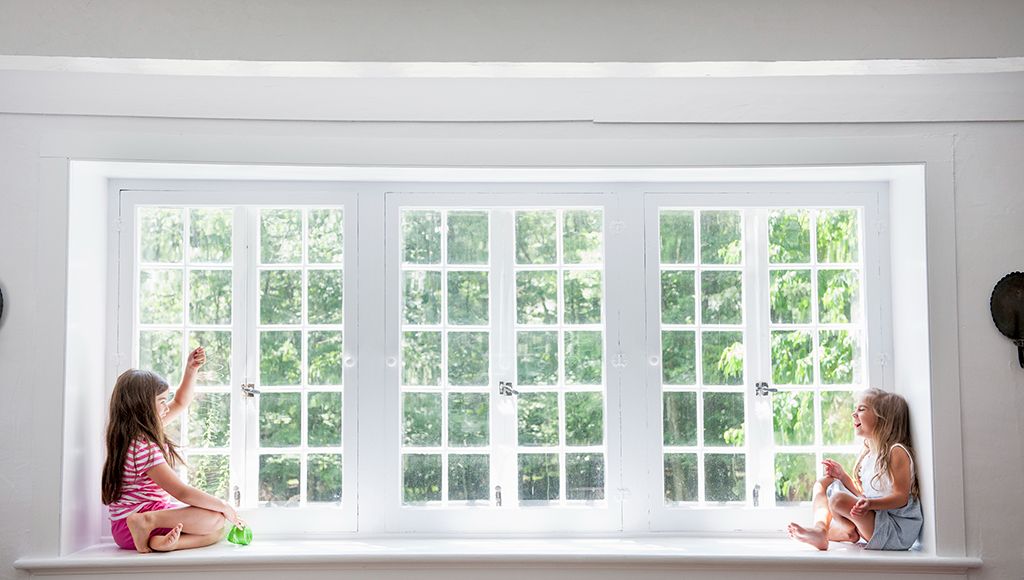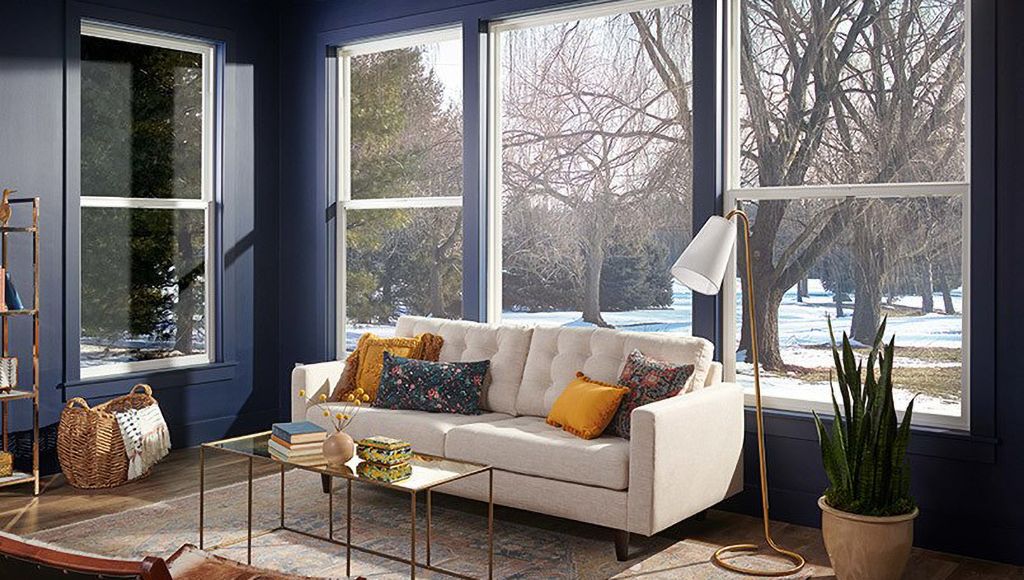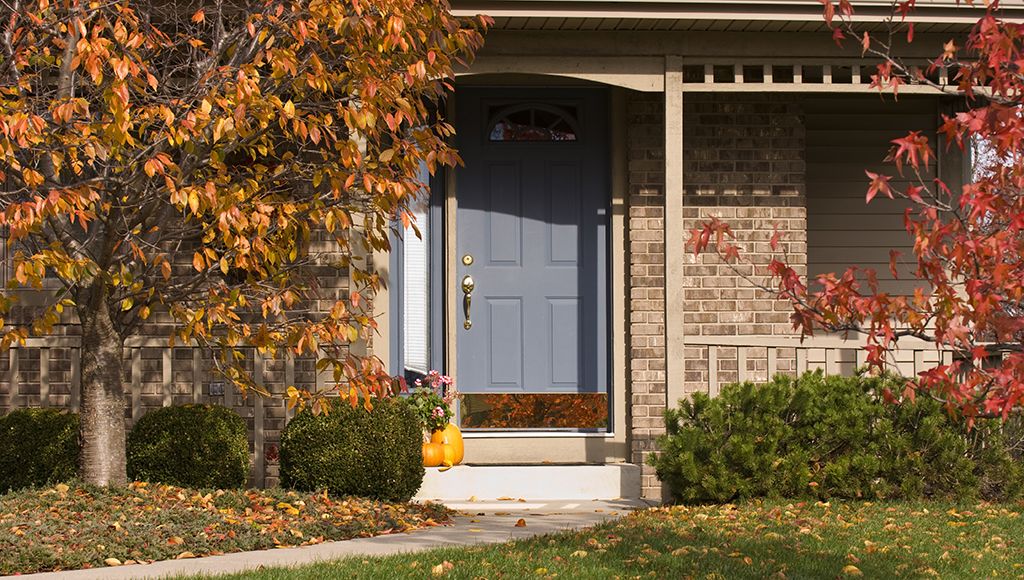You need to maintain and upgrade your home’s envelope if you want to keep it energy efficient. That could mean rejuvenating your asphalt shingles to help them last longer, or repairing your siding to make sure it doesn’t let heat escape—but it also means paying attention to your doors and windows.
Upgrading to energy-efficient windows and doors is one of the best ways to cut energy costs without sacrificing comfort in 2025. Features like high-insulation glass and special material cores are better insulated, meaning your HVAC system doesn’t have to work as hard.
Finding the best product for your home can feel overwhelming when you have so many options to choose from—but we’ve got you covered. Get a sneak peek at our top 5 favorites in the guide below.
In 2025, features like Low-E glass and fiberglass exteriors aren’t just a nice option anymore—they’re an absolute must if you want maximum efficiency from your new windows. The brands listed here all offer an excellent balance of features and options, but they’re also nice to look at, too!
Marvin’s Signature Ultimate Windows are a testament to the fact that homeowners don’t have to sacrifice aesthetics for function. Most have a durable aluminum exterior with two or more panes of Low-E glass, and in some cases, a layer of argon insulating gas between the interior panes.
They also offer variations designed for special use cases, like wildfire risks, hurricanes, and high altitudes.

Andersen’s 400-Series Windows are built on decades of engineering and have a solid wood core for optimal performance and longevity. Several models have a composite Fibrex® exterior, while others are made from aluminum, fiberglass, and/or vinyl cladding instead.
Low-E glass, a low solar gain rating, and robust weather stripping help keep indoor temperatures stable—unless you want them to change. Shop Andersen’s 400 Series
Pella’s Lifestyle Series Windows don’t compromise on a single factor—they claim to provide the best balance of energy efficiency, sound control, and value on the market.
Dual-pane and triple-pane models with AdvancedComfort Low-E glass block over 85% of all UV rays, which helps to prevent heat transfer and loss in warm or cold weather.

Low-E glass is the frontrunner for efficiency features in Milgard’s Trinsic Series windows, but it’s far from the only desirable feature. They also meet or exceed ENERGY STAR® v6 ratings for most of the climates they serve across the US—and come with a full lifetime warranty.
Clean lines and narrow frames make these windows a top choice for minimalists and anyone who loves that classic contemporary look. Shop Milgard’s Trinsic Series

Simonton’s Reflections Series windows are broadly known for having superior strength and durability, but they’re also show-stoppingly efficient—so much so that ENERGY STAR® rated them the Most Efficient on the market in 2024.
The frames, sills, and sashes are specifically designed for better insulation, while the triple-fin weatherstripping stops water and air infiltration. Upgrade from argon to krypton gas, or add a subtle tint, to make them even more efficient.
| Product | Key Features | Best For | Average Cost per Window* |
|---|---|---|---|
| Marvin Signature Ultimate | Durable fiberglass and wood-clad windows with Low-E glass for high insulation. | Homeowners in colder climates or high elevations. | $1,200–$3,000 |
| Andersen 400 Series | Composite and wood windows with high-quality Low-E glass coatings and weather-resistant frames. | Homes in various climates needing durability and aesthetics. | $500–$3,000 |
| Pella Lifestyle Series | Affordable windows with double or triple-pane options and optional soundproofing. | Urban areas with high noise and temperature fluctuations. | $750–$1,200 |
| Milgard Trinsic Series | Slim vinyl-framed windows with Low-E glass and Argon fills to maximize natural light. | Sleek design homes in milder climates. | $400–$1,800 |
| Simonton Reflections Series | Vinyl windows with double- or triple-pane glass and energy-efficient spacers. | Budget-conscious homeowners in warmer regions. | $200–$700 |
Energy-efficiency and appearance are great starting points when you’re shopping for doors, but entry points also need to be highly secure and able to withstand the elements for decades. Materials like solid wood, composite, vinyl, urethane, and polyethylene make all the options below trustworthy and reliable on all counts.

Therma-Tru’s Fiberglass Entry Doors are incredibly strong and have a solid polyurethane foam core that’s up to four times more insulating than wood.
Composite rails at the top and bottom provide even better protection and help to prevent moisture from wicking into the wood frame—or your home. Interchangeable glass designs, colors, and grains make it easy to find an exterior door that complements your home. Shop Therma-Tru’s Fiberglass Entry Doors
ProVia Endure™ vinyl sliding patio doors are aptly-named—they’re built to last with features like double and triple-pane glass for better energy-efficiency, solid wood-clad interiors, and all-vinyl construction, depending on which model you go with.
You can expect improved thermal efficiency and better sound abatement in the Endure line—and that means less heat loss in cold weather. Shop ProVia’s Endure Vinyl Sliding Doors

Andersen’s A-Series Frenchwood Gliding Patio Doors are made from pine or maple wood with a fiberglass exterior that won’t let you down, even in the harshest weather.
They can stand up to hurricane-force winds, salt air, and extreme temperatures, thanks to a flexible polyethylene leaf seal with a urethane foam core on the sills and side jambs. You can expect this door to keep wind, water, and dust out.
Pella’s 250-Series Fiberglass Sliding, Hinged, Bifold, and Multi-Slide Patio Doors are tested for long-lasting performance in sunlight, humidity, and extreme temperatures, making them an excellent all-around choice.
Choose from dual or triple-paned InsulShield®, NaturalSun Low-E with Argon, NaturalSun+ Low-E Insulating, and SunDefense+ Low-E Insulating glass for maximum energy-efficiency. Pella 250 Series Fiberglass Doors
Marvin’s Elevate Sliding Glass Doors are just about as contemporary as it gets—clean lines, big panes, and a durable, low-maintenance Ultrex® fiberglass exterior make them easy to look at and easy to care for. T
heir two main efficiency offerings are Low-E glass coatings and argon insulating gas, but you can also tint the doors for privacy or to reduce heat transfer. As with their windows, they do offer variations to better suit specific use cases—like wildfire zones.
| Product | Key Features | Best For | Average Cost per Window* |
|---|---|---|---|
| Therma-Tru Fiberglass Entry Doors | Fiberglass with foam cores and weatherstripping for maximum insulation. | Entry doors for climates with extreme weather. | $450–$2,500 |
| ProVia Endure Vinyl Sliding Doors | Insulated vinyl sliding doors with low air and water infiltration. | Homes in warmer climates seeking sliding door options. | Varies (contact for quote) |
| Andersen A-Series Patio Doors | Wood and composite doors with Low-E glass, offering superior insulation. | Patio doors in areas with large temperature swings. | Varies (contact for quote) |
| Pella Fiberglass Exterior Doors | Durable fiberglass doors with foam insulation and customizable Low-E glass. | Entry and patio doors for colder climates. | $2,000–$3,800+ |
| Marvin Elevate Sliding Glass Doors | Wood-fiberglass doors with multi-point locking for added security and insulation. | Sliding doors in areas with strong winds and moderate weather. | $2,000–$3,500 |
Shopping for doors and windows isn’t always easy for the average layperson. You’ll often run into descriptions and product pages that feel like they’re made for an industry professional instead of the average homeowner.
That’s intentional, but frustrating when you just want to do your own research. To help you on your shopping journey, here’s a dead-simple overview:
Energy-efficiency is about your home’s entire envelope— so you have to consider more than just your windows and doors. If you really want to make your home as efficient as possible, consider taking a top-down approach by having Roof Maxx applied to your asphalt roof.
Heat rises—so if you have leaks, cracks, or gaps in your roof and shingles, they’ll let out heat and work against the energy-efficient upgrades you’ve made to other parts of your home.
Roof Maxx treatments rejuvenate your asphalt shingles by restoring the natural oils they lose over time so that they stay flexible and durable. Our eco-friendly solution helps keep in heat by preventing your roof from cracking or breaking. This allows you to maximize the benefits of your energy-efficient windows and doors, improving their return on investment over time.
Having your roof replaced is messy and expensive! You can expect to pay between $20,000 to $25,000 or more for a full replacement, but Roof Maxx is backed by science and costs up to 80% less—each application can extend the life of your shingles by up to 5 years. Repeating the treatment at five-year intervals may extend the life of your roof by up to 15 years, saving you money, time, and headaches.
Remember: installing the right windows and doors helps create a well-sealed, energy-efficient home, but even the most expensive, high-tech products won’t work well if heat can escape out of your roof. Supporting these upgrades with Roof Maxx is one of the best ways to keep your utility bills low while saving on home maintenance costs.

Features like Low-E glass, argon and krypton gas fills, and highly-insulating foam cores make Marvin, Andersen, and Pella doors and windows a solid choice for your home. Brands like Therma-Tru and ProVia excel at creating strong, weather-resistant products that seal out the elements and keep you safe.
Combining new windows and doors like these with a Roof Maxx treatment can maximize energy efficiency, comfort, and sustainability in any home. Use the list above as a starting point to explore your options, then contact us to make sure your roof is taken care of and connect with a dealer in your area for a free, no-obligation quote.
With our five-year, transferable warranty, you’ll enjoy the peace of mind that your roof and entire home are protected.